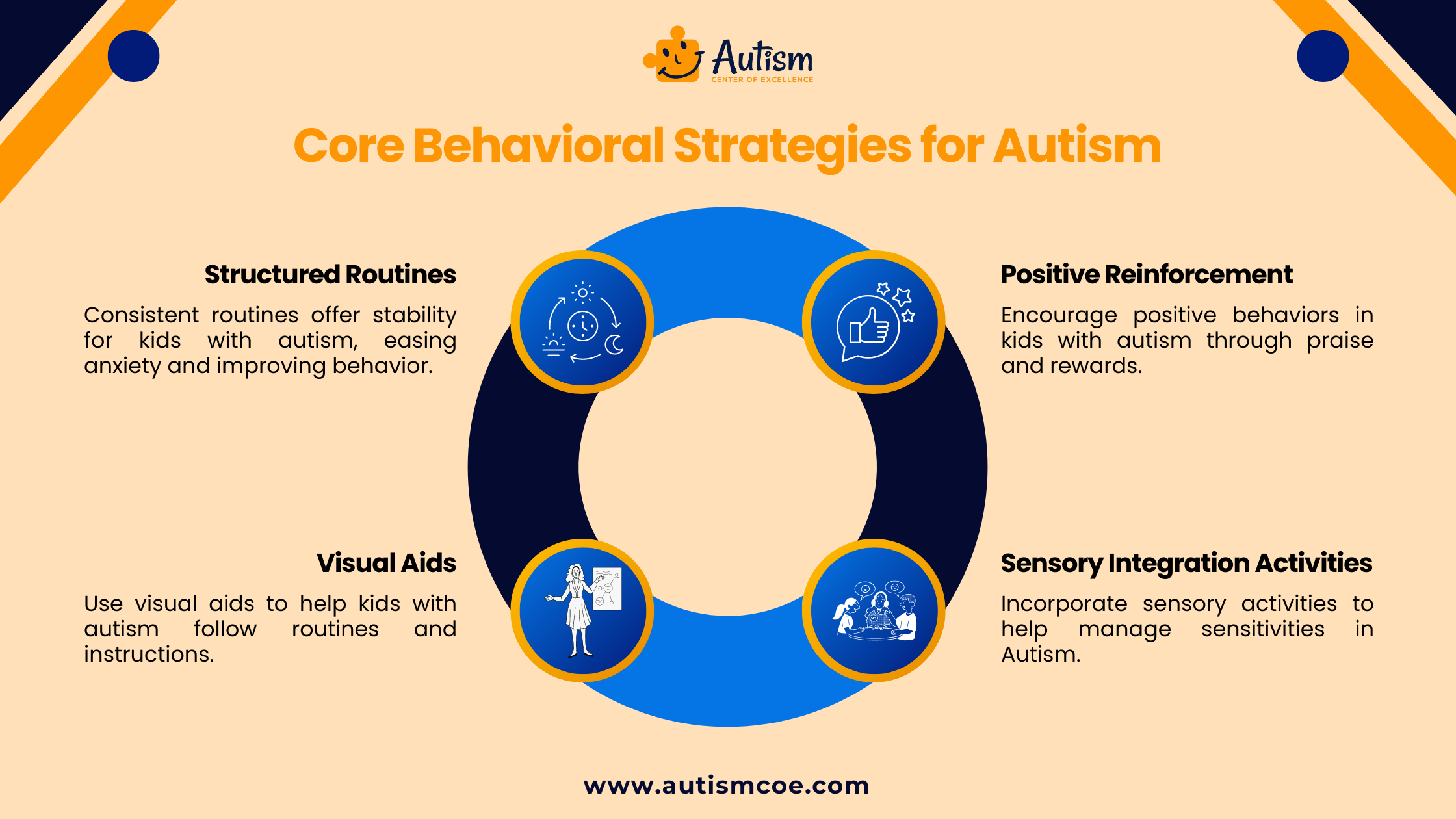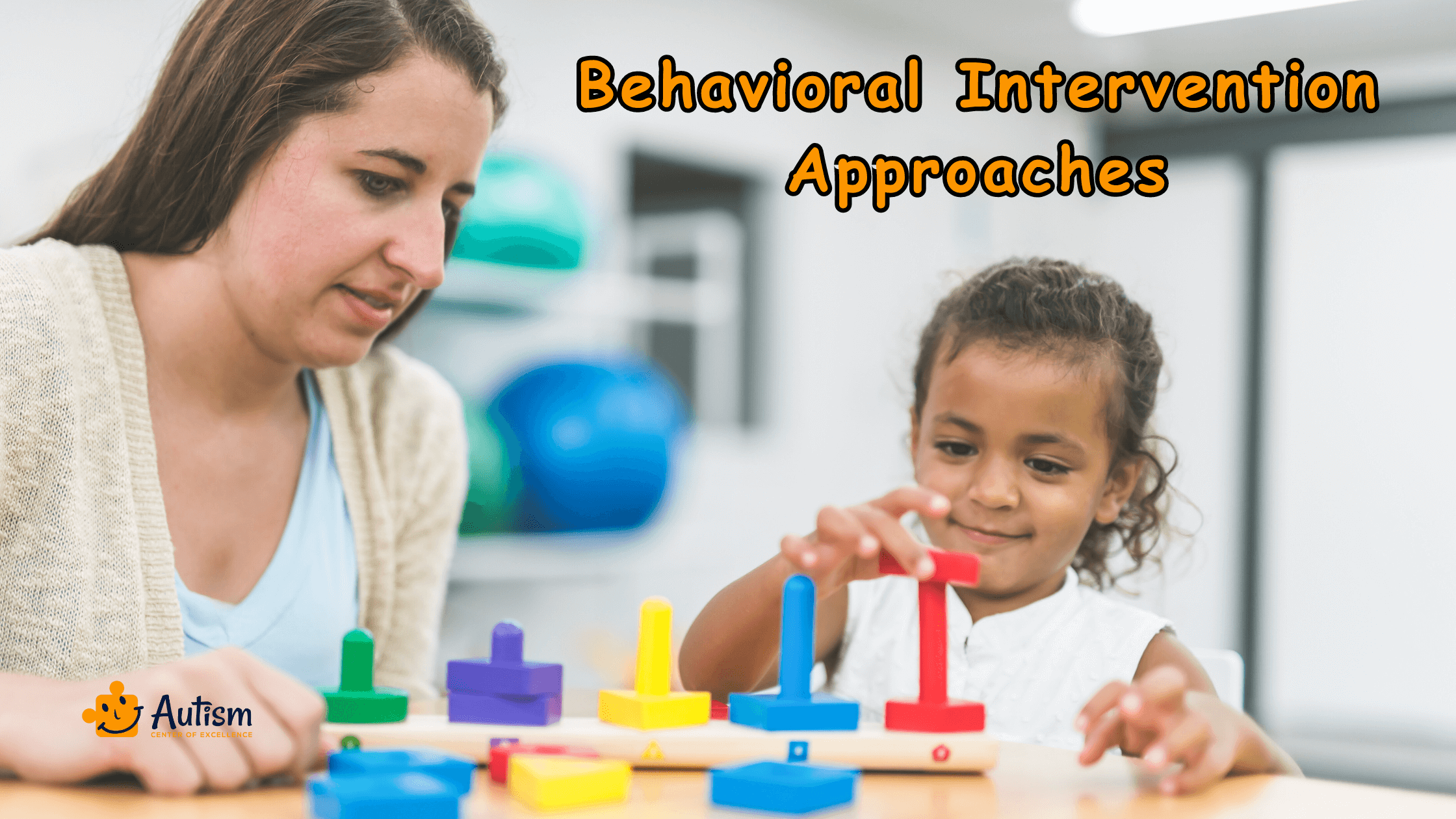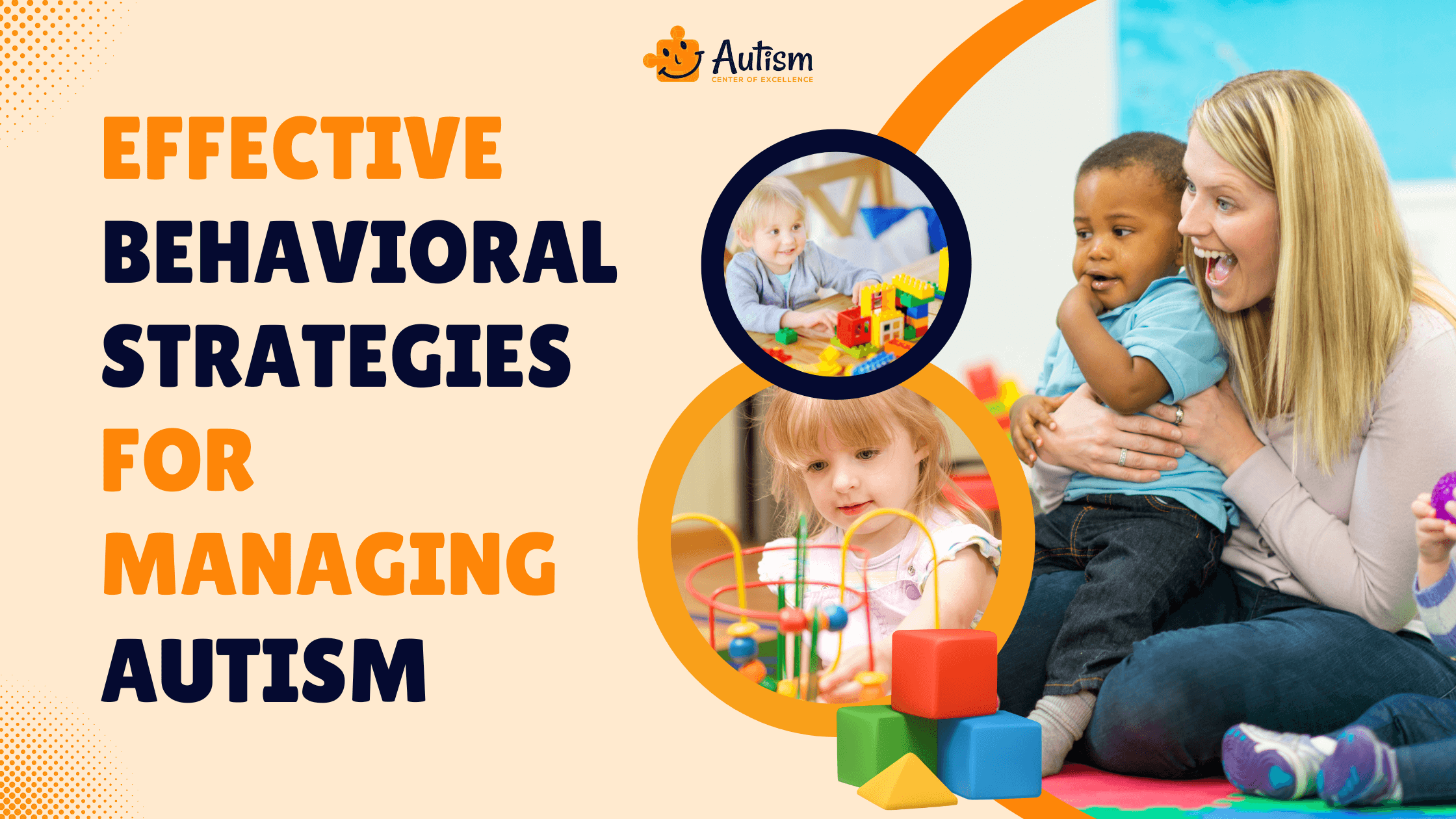Autism Spectrum Disorder (ASD) affects millions of families worldwide, challenging parents, caregivers, and educators with unique caregiving and educational strategies. Understanding and managing autism through effective behavioral strategies can significantly improve the quality of life for children on the spectrum. This article explores practical, evidence-based approaches to help those affected by autism lead more fulfilling lives
Importance of Behavioral Strategies for Autism
Behavioral strategies play a crucial role in managing Autism Spectrum Disorder (ASD) by addressing various challenges children may face in communication, social interaction, sensory processing, and behavior regulation. These strategies are designed to support children with autism in navigating their daily lives, promoting independence, and enhancing their overall well-being.
- Effective behavioral strategies help children develop essential skills and manage challenging behaviors.
- Structure, predictability, and consistency are provided through behavioral strategies, reducing anxiety and promoting security.
- Clear routines, visual supports, and positive reinforcement create environments conducive to learning and positive behavior.
- Behavioral strategies empower children to learn new skills, enhance social interactions, and regulate emotions and sensory experiences.
- Targeted interventions like social skills training and sensory activities help children develop coping mechanisms and adaptive strategies.
Overall, the implementation of effective behavioral strategies is essential for supporting children with autism in reaching their full potential and achieving meaningful outcomes in various areas of life. By recognizing the importance of behavioral interventions and adopting evidence-based approaches, caregivers, educators, and professionals can make a significant difference in the lives of children with autism.

Core Behavioral Strategies for Autism
Living with Autism Spectrum Disorder (ASD) can present unique challenges, but implementing effective behavioral strategies can greatly improve the quality of life for children with autism. Here are some core strategies that can help manage autism-related behaviors and support overall development:
Structured Routines
Maintaining a consistent daily routine can provide a sense of security and predictability for children with autism. Structured routines, including regular times for meals for children with autism, school, therapy sessions, and leisure activities, can help reduce anxiety and improve overall behavior.
Positive Reinforcement
Using positive reinforcement techniques can encourage desirable behaviors and skills in children with autism. This strategy can be implemented by offering praise, tokens, or favorite activities as rewards, effectively strengthening positive actions and achievements.
Visual Aids
Visual aids like picture schedules, charts, and signs can assist children with autism in understanding and following routines and instructions. These visual tools help convey information in a clear, concrete way, making daily tasks more manageable.
Sensory Integration Activities
Many people with autism have sensory sensitivities. Incorporating sensory integration activities, such as playing with textured materials or engaging in physical exercises, can help manage these sensitivities and promote a sense of calm.
Join Our Weekly Newsletters!
Subscribe now to stay updated with our latest email updates.
Implementing Behavioral Strategies at Home and School
Integrating behavioral strategies into daily routines at home and school is essential for effectively managing Autism Spectrum Disorder (ASD) and supporting children with autism. Here are some practical tips for parents and educators to implement these strategies:
- Establish Consistent Routines: Create a structured daily schedule with consistent routines for activities such as meals, bedtime, and homework. Use visual schedules or charts to help children with autism understand and anticipate daily activities.
- Use Positive Reinforcement: Reinforce positive behaviors with praise, rewards, or preferred activities. Focus on specific behaviors you want to encourage and be consistent with rewards to reinforce desired outcomes.
- Provide Sensory-Friendly Environment: Create a sensory-friendly home environment by minimizing sensory triggers and providing sensory accommodations such as noise-canceling headphones, weighted blankets, or fidget toys.
- Foster Communication: Encourage open communication and provide opportunities for children with autism to express their needs and preferences. Use clear and concise language, visual supports, and alternative communication methods as needed.
- Collaborate with Teachers: Work closely with teachers and school staff to develop and implement individualized behavior plans based on the needs of the student with autism. Share strategies that are effective at home and collaborate on consistency between home and school environments.
- Utilize Visual Supports: Incorporate visual supports such as Visual Schedules, cue cards, or social stories to support understanding and independence in the classroom. Provide visual cues for transitions, task instructions, and behavioral expectations.
- Implement Structured Activities: Break down tasks into manageable steps and provide structured activities with clear expectations. Use Visual Supports and prompts to guide students through tasks and help them stay focused.
- Promote Social Skills: Provide opportunities for social interaction and peer engagement, and teach social skills through structured activities, role-playing, and cooperative games. Encourage positive social interactions and provide support as needed.
Collaboration between home and school environments is crucial for consistency in implementing behavioral strategies and supporting the overall development and well-being of children with autism. By working together, parents and educators can create a supportive environment that maximizes learning and promotes positive outcomes for children with autism.

Behavioral Intervention Approaches
In managing Autism Spectrum Disorder (ASD), employing evidence-based behavioral intervention approaches is crucial for addressing specific behavioral challenges and promoting positive outcomes. Here’s an overview of some of the most effective approaches:
Applied Behavior Analysis (ABA):
ABA is a widely recognized and evidence-based approach that focuses on understanding and modifying behavior through systematic techniques. It involves breaking down complex skills into smaller, manageable tasks and using reinforcement strategies to encourage desired behaviors. ABA interventions can be tailored to target various areas of development, including communication, social skills, and daily living skills.
Social Skills Training (SST):
Enhancing social interaction and communication skills is crucial for children with autism. Social skills training can include role-playing, social stories, and group activities aimed at teaching appropriate social behaviors, such as taking turns and making eye contact.
Cognitive Behavioral Therapy (CBT):
Cognitive Behavioral Therapy is a therapeutic approach that focuses on changing negative thought patterns and behaviors by promoting cognitive restructuring and skill-building. While traditionally used to treat anxiety and depression, CBT can also be adapted to address specific challenges faced by children with autism, such as anxiety, repetitive behaviors, and social skills deficits. CBT techniques may include cognitive restructuring, social skills training, and exposure therapy.
These behavioral intervention approaches can be tailored to meet the unique needs of children with autism and address specific behavioral challenges they may encounter. By incorporating evidence-based strategies and individualizing interventions based on the strengths and preferences of each individual, parents, educators, and therapists can effectively manage autism and support positive development and well-being.
Frequently Asked Questions & Answer
What Are Some Common Behavioral Challenges Faced by Children With Autism?
Common behavioral challenges include difficulties with communication, social interaction, repetitive behaviors, sensory sensitivities, and emotional regulation.
How Can I Help My Autistic Child at Home?
- Create a supportive and sensory-friendly environment at home by minimizing distractions and providing a quiet space for your child to retreat to if needed.
- Offer opportunities for sensory stimulation or relaxation, such as weighted blankets, fidget toys, or sensory bins.
- Engage in activities that cater to your child’s interests and strengths, and provide opportunities for social interaction and play.
- Communicate openly with your child, using clear and simple language, and be patient and understanding of their unique needs and challenges.
- Seek support from professionals, such as therapists or behavioral specialists, for guidance and assistance in implementing effective strategies at home.
How to Manage Behavior in Autism?
- Establish clear and consistent routines and expectations to help manage behavior effectively.
- Use positive reinforcement techniques to encourage desired behaviors and discourage challenging behaviors.
- Implement visual supports, such as schedules or visual cues, to aid in communication and understanding.
- Provide opportunities for sensory regulation and self-calming activities, such as deep breathing exercises or sensory breaks.
- Collaborate with professionals, including therapists and educators, to develop personalized behavior management strategies tailored to your child’s specific needs.
How Do I Start Cognitive Behavioral Therapy at Home?
- Begin by familiarizing yourself with the principles and techniques of cognitive behavioral therapy (CBT) through resources such as books, online courses, or workshops.
- Identify specific behaviors or challenges that you would like to address with CBT, such as anxiety or repetitive behaviors.
- Break down the target behavior into smaller components and develop a plan for gradually introducing CBT techniques, such as cognitive restructuring or behavioral experiments.
- Practice CBT techniques regularly with your child in a supportive and structured environment, providing guidance and reinforcement as needed.
- Monitor progress and adjust your approach as necessary, seeking guidance from a qualified therapist or mental health professional if needed.
Conclusion
It’s essential to recognize the significance of implementing effective behavioral strategies in managing Autism Spectrum Disorder (ASD). By understanding and utilizing evidence-based approaches like Applied Behavior Analysis (ABA), Positive Behavior Support (PBS), and Cognitive Behavioral Therapy (CBT), can make a meaningful difference in the lives of children with autism.
Encouraging positive behaviors, providing structured routines, and fostering social skills development are just some of the ways we can support children with autism in reaching their full potential. By collaborating between home and school environments and tailoring interventions to meet each individual’s unique needs, we can create a supportive and empowering environment for those with autism. Autism Center of Excellence aims to empower children and families affected by autism. AutismCOE offers ABA Therapy, Autism Early Intervention Program, Autism School Readiness Program, Speech Therapy, and Occupational Therapy services for children aged 2 – 14 years in-home as well as in center-based environments.
Please Note: The content of this blog is for informational purposes only and should not be considered a substitute for professional medical advice, diagnosis, or treatment. Consult a qualified health care professional for personalized guidance tailored to your specific situation.

Bhavika Bhasin
Bhavika Bhasin is the Research and Marketing officer at AutismCOE. She works with children and adults with ASD. Her clinical research includes evaluating various available autism screening and diagnosis methods and their efficacy. She is currently developing a novel screening exam that is indicated to be more accurate than the existing available exams. She is also writes articles papers for various publications.


